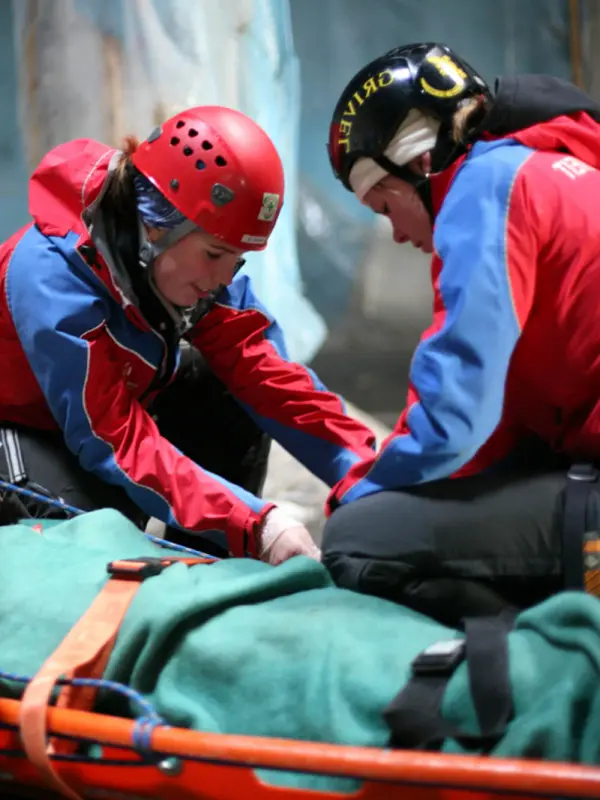Deep in the Maine wood.. paramedics, nurses and doctors go bump in the dark!
I had recently participated in a simulation as part of my own Wilderness First Responder(WFR) training, so I sort of knew what to expect –“patients†made up with fake blood, lots of yelling, screaming, and general chaos. So, I was ready. Or so I thought.
The simulation “story†was a group of 8 neophyte hikers who had been caught in a hurricane while looking for wild mushrooms in the woods. The scene was a chilly Maine evening, completely dark, with the hauntingly beautiful cries of loons in the background.
I set off with one of the 3 teams and couldn’t believe we were actually going to bushwack in the dark to find our patients. And no one was screaming or yelling. How will we ever find them?? The teams eventually did manage to locate the 8 “patients†who had an assortment of nasty traumas.
It was amazing to see how these paramedics, nurses and doctors worked quickly and efficiently in treating their “patientsâ€. There were limited medical supplies, no backup hospital technology, and they were working in the darkness of the Maine woods. Headlamps can do just so much.
Unlike my WFR class, which was mostly non-medical camp counselors and outing trip leaders, these folks had lots at stake if they screwed up. And they were being videotaped by the WMA medical director to be reviewed in class the following day. The pressure was on!
I was so impressed with the dedication to learning and practicing in adverse conditions these 19 students showed during the WALS simulation. It is reassuring to know that such folks are well-trained and available to provide medical help– be it in the wilderness, a rural area, or an urban setting turned wild due to a disaster. Bravo and thanks to each of them!
Anne Rugg
WMA General Manager
